Sustainable Web Design 2025: Reducing Carbon Emissions and Enhancing User Experience

Explore the sustainable web design trends of 2025, from using green hosting to optimizing images and user experience to reduce carbon emissions.
Sustainable Website Design: The Trend of the Future (2025)

In the face of increasingly severe climate change, sustainable website design is no longer a choice but a necessity. Websites, although invisible, consume a significant amount of energy, contributing to global carbon emissions. Sustainable website design aims to minimize this negative impact while providing numerous benefits for businesses and users.
The Importance of Sustainable Website Design
Every time you visit a website, data is transmitted from the server to your device. This process consumes energy, from operating the server to maintaining the network infrastructure. Without optimization measures, a website can become a significant source of energy consumption. Sustainable website design is an approach that helps reduce this energy consumption, protect the environment, and lower operating costs.
Top Sustainable Website Design Trends in 2025
- Using Green Hosting: Choose hosting providers that use renewable energy or have carbon offset programs.
- Optimizing Images: Use efficient image compression formats like WebP and AVIF to reduce file sizes without sacrificing image quality. Consider compressing images with online tools or plugins before uploading them to your website.
- Minimizing JavaScript Usage: JavaScript can slow down page load times and consume more energy. Limit the use of JavaScript when not necessary and optimize JavaScript code when used.
- Minimalist Design: Simple design, focused on the main content, eliminating unnecessary elements helps reduce page size and increase loading speed.
- Optimizing Source Code: Writing clean, efficient code that adheres to web standards helps reduce file size and improve performance.
- Improving PageSpeed: Use tools like Google PageSpeed Insights to assess and improve your website's loading speed.
- User-Friendly UX/UI: Designing an intuitive, easy-to-use user interface helps users find the information they need quickly and easily, reducing access time and energy consumption.
Benefits of Sustainable Website Design
- Reducing Carbon Emissions: Reducing energy consumption directly contributes to reducing carbon emissions, protecting the environment.
- Improving User Experience: Faster page load times and a more user-friendly interface provide a better user experience.
- Improving SEO Ranking: Google values page load speed and user experience, so sustainable website design can help you improve your SEO ranking.
- Enhancing Brand Reputation: Demonstrating your commitment to environmental protection enhances reputation and attracts environmentally conscious customers.
Steps to Implement Sustainable Website Design
- Choosing Green Hosting: Research and choose a hosting provider with environmental protection commitments.
- Optimizing Images and Videos: Use efficient compression formats, reduce file sizes, and use a CDN to distribute content.
- Using a CDN (Content Delivery Network): A CDN helps distribute your content across multiple servers worldwide, reducing the load on the main server and increasing page load speed for users in different regions.
- Writing Efficient Code: Write clean, readable, maintainable code that adheres to web standards.
- Testing and Improving PageSpeed: Use tools like Google PageSpeed Insights to assess and improve your website's loading speed. Regularly check and optimize to ensure the best performance.
Tools to Support Sustainable Website Design
- Google PageSpeed Insights: Evaluates and provides recommendations for improving page load speed.
- WebPageTest: Detailed website performance analysis.
- ImageOptim: Optimize images easily.
- Green Web Foundation: Check if your website is hosted on a green server.
Examples of Successful Sustainable Websites
More and more websites are adopting sustainable design methods and achieving success. These websites typically have fast loading speeds, user-friendly interfaces, and a commitment to environmental protection.
You can learn more about these examples on websites specializing in sustainable design.
Vinawebapp.com: A Reliable Partner for Sustainable Website Design in Da Nang
If you are looking for a professional website design company in Da Nang with experience in creating sustainable websites, contact Vinawebapp.com. They can help you build a website that is not only beautiful but also environmentally friendly, providing long-term benefits for your business.
Advice from Vinawebapp.com: Start by assessing your current website and identifying areas for improvement. Even small changes can make a big difference.
Conclusion
Sustainable website design is the inevitable trend of the future. By applying sustainable design methods, designers and businesses can minimize negative impacts on the environment, improve user experience, increase SEO ranking, and enhance brand reputation. Take action today to build a more sustainable future for all of us. Let's start with your own website!
Don't hesitate to contact experts like Vinawebapp.com for the best advice and support in your sustainable website design process. The future of the internet is in our hands, let's build a green and friendly web environment together!

